Before we begin.
The 2020 Major Gift Benchmark Study asked people working in nonprofit organizations (n=580) what they consider to be a major gift, how they are staffed to raise major gifts, the types of information used to identify major gift prospects, and more. Study respondents were also asked if their organization met their annual major gift fundraising goal.
Among respondents, 76 percent had roles that typically have major gift responsibilities: CEO or Executive Director, Major Gift Officer, Chief Development Officer, Vice President or Director of Development and Planned Gift Officer. The study also reached prospect researchers, directors of operations for advancement, and people responsible for managing data within a nonprofit.
Respondents work for organizations raising small amounts (less than $250,000 per year) and large amounts ($75 million or more per year) in all regions of the United States and some in Canada. With this data, we are able to share findings on which aspects of major gift fundraising are associated with a higher likelihood of meeting major gift fundraising goals. It was our intention to glean insight into this when we conducted the first Major Gift Benchmark Study in 2017 which you can download for free here.
NOTE: MarketSmart really only funded the study. We are super-thankful for the help of our collaborators — The Association of Philanthropic Counsel (APC), The Association of Fundraising Professionals – DC Chapter, and DonorSearch who helped steer the study — and our favorite researcher Melissa Brown.
And now, here are the benchmarks you really should know and share.
1. What is considered to be a major gift by fundraisers?
The most common answer (the mode) was between $1,000 – $2,499 while the median (middle value among the list of options) was $5,000 – $9,999.
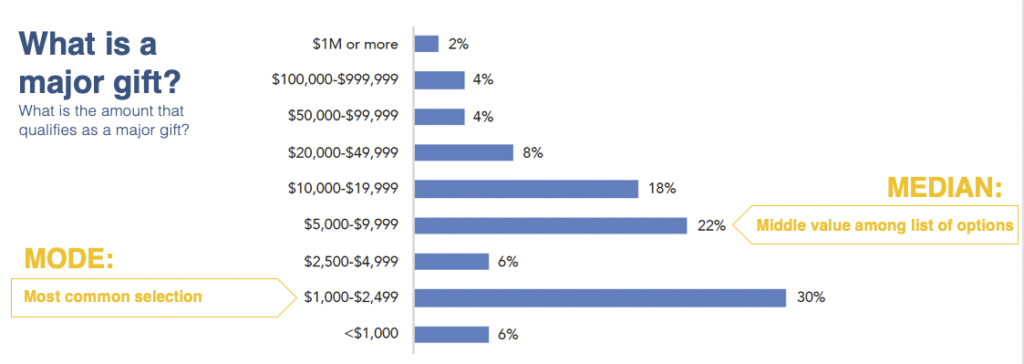
Interestingly this is pretty much exactly what fundraisers told us three years ago in the previous study.

2. Larger organizations and institutions consider greater amounts to be major gifts.
Plus, the range expands tremendously as the size of the organization increases.
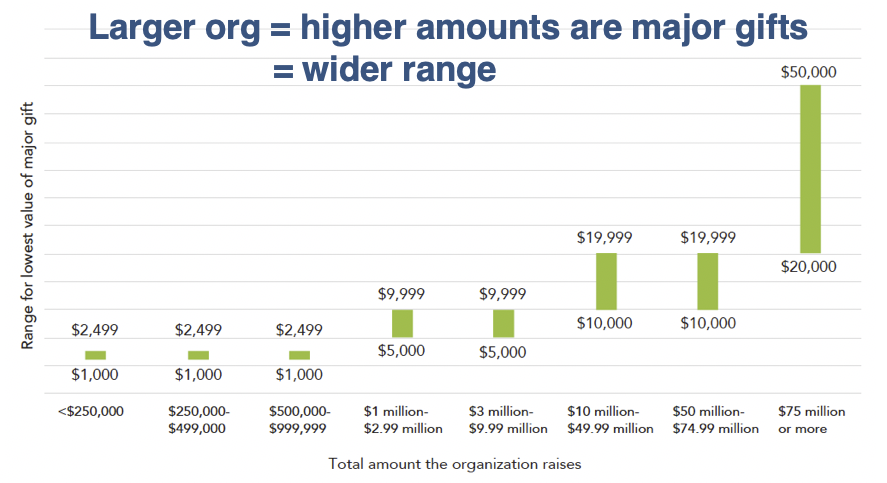
3. It takes between six months and two years to secure a major gift.
Scream this from the mountain tops folks. Your leadership and board need to take the pressure off of you and your team. They simply can’t expect you to close major gifts quickly.
Instead, they (and you) should monitor where each donor resides in the consideration process and how quickly they are moving themselves through the consideration continuum.
Full disclosure: It’s a bit self-serving for me to say so since MarketSmart’s software monitors this data.
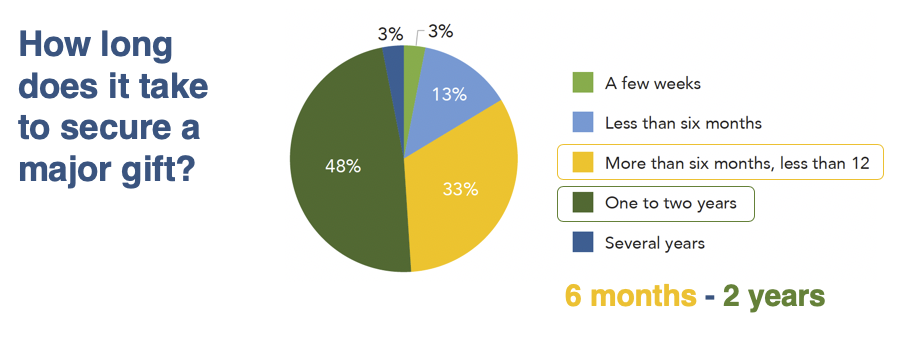
4. In 2019, 80% of nonprofits wanted to raise major gifts but only 43% met their fundraising goals.
This finding should probably lead us to wonder if the fundraising goals set for staff are simply unrealistic.
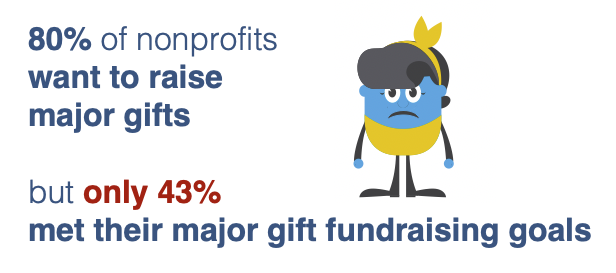
5. Including more people in major gift solicitations makes fundraisers more likely to meet their fundraising goals.
Including board members, organizational or institutional leaders, volunteers, program directors in solicitations is clearly a good idea.
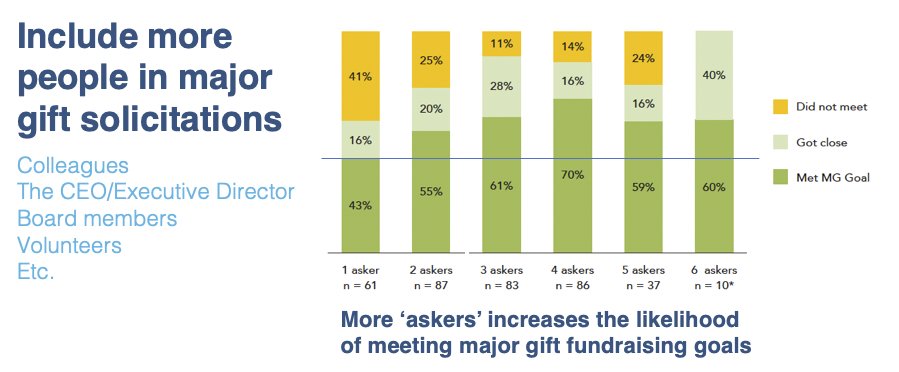
6. 49% of fundraisers were disappointed with their current pipeline of major gift prospects (and only 34% were satisfied).
I’ve always said that, too often organizations and institutions set-up their fundraisers for failure. First, they saddle them with unrealistic goals and then they give them poorly populated portfolios. Not fair!
Quantitative data such as wealth screens and predictive models isn’t enough. Fundraisers need qualitative data too if they want highly qualified leads.

Again, full disclosure: This is what MarketSmart provides. We employ our tech-enabled donor discovery System at scale. This helps fundraisers understand each donor’s story (why they care and how their story entwines with your mission). Plus it captures about 50 other data points you’d likely capture if you only had the time to conduct donor discovery with hundreds, thousands or tens of thousands of supporters.
7. Using more technology solutions for prospect identification and qualification makes fundraisers more satisfied with their pipelines, more likely to complete major gift solicitations and more likely to meet or get close to meeting their goals.
This is a biggie (and possibly another one that’s a bit self-serving for MarketSmart.
Traditionally, organizations would employ prospect research including wealth screens, Google, LinkedIn, and myriad other tools. Of course at MarketSmart, we believe fundraisers should spy on donors a little less and engage with them a lot more (at scale, using technology). Through engagement, you can discern what’s truly in each individual donor’s heart and mind. Then you can determine when each one is ‘outreach ready’ and be armed with the information they shared with you online so your outreach messages can be more personalized and relevant. As a result, you’ll be more likely to get calls returned and appointments set.
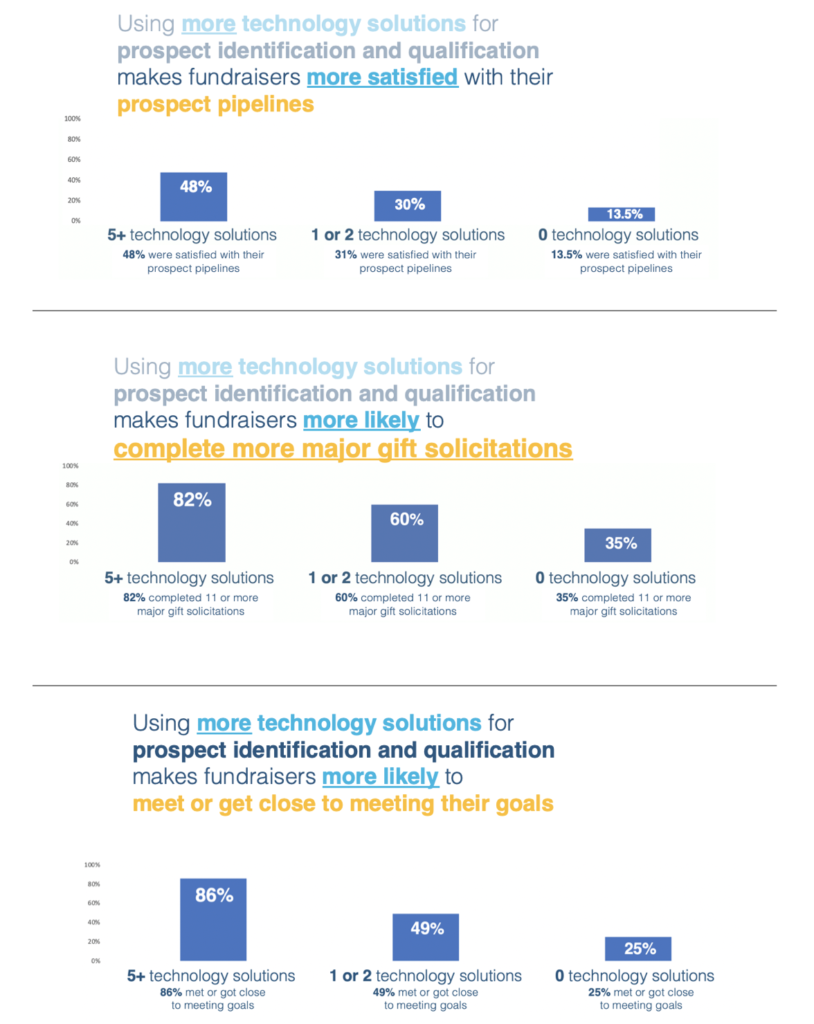
Bonus benchmark.
Ok, this one is TOTALLY self-serving. But just remember, I didn’t do the research and I didn’t steer the study. There was a team involved (listed at the beginning of this article).
Now, having said that, the study found that using more human-based sources for prospect identification and qualification also makes fundraisers more likely to meet or get close to meeting their fundraising goals.
The most powerful human-based source I know is the donor! And donors are at the heart of our Engagement Fundraising methodology and System. If you engage with them, find out their needs, and match their needs with your mission, they’ll give! Are you surprised by this finding? I’m not!
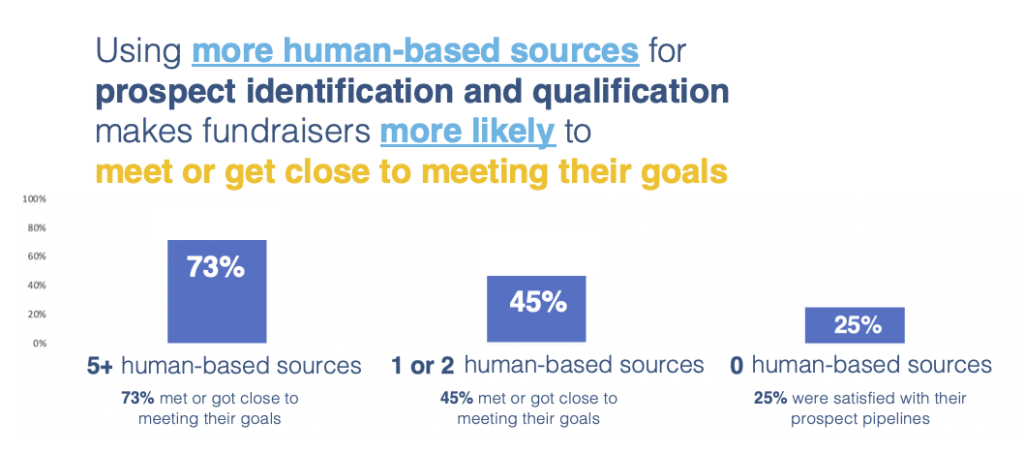
There’s much more in the report.
I only covered a few of the highlights in this article. There’s so much more in the report. So, I encourage you to download the full report here at no cost whatsoever.

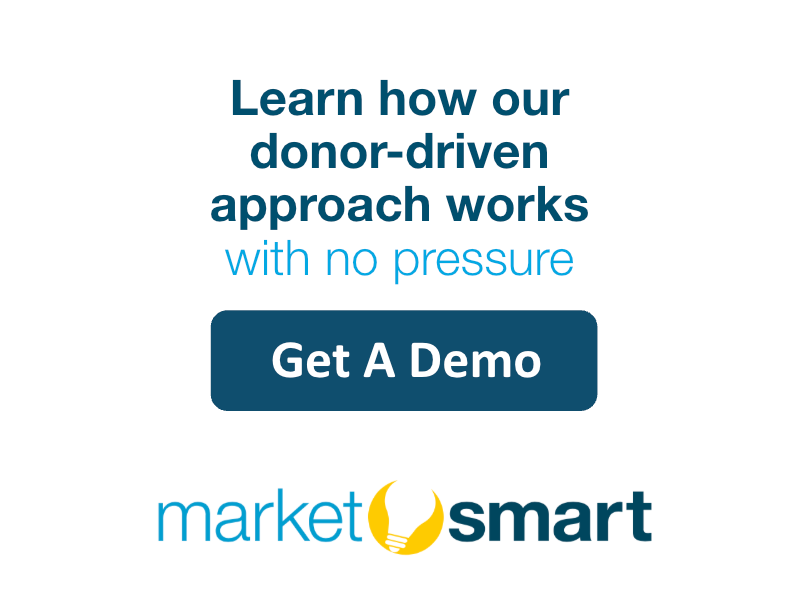
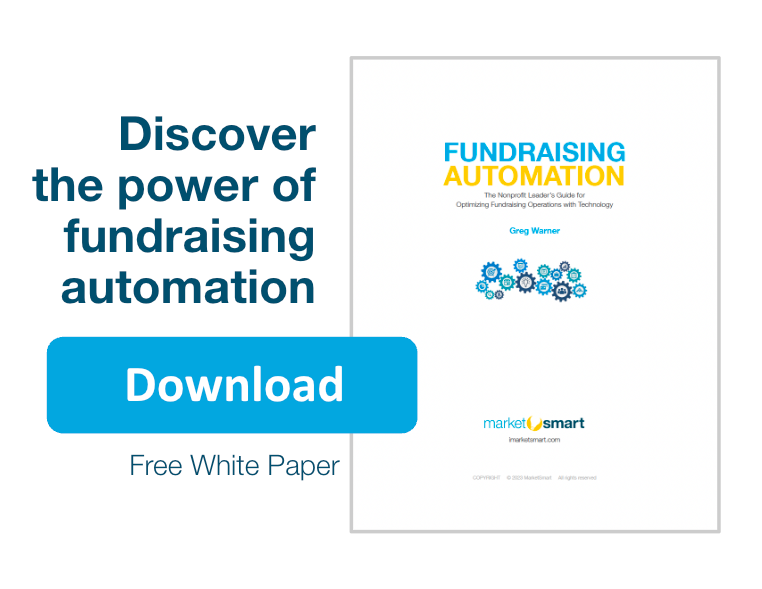
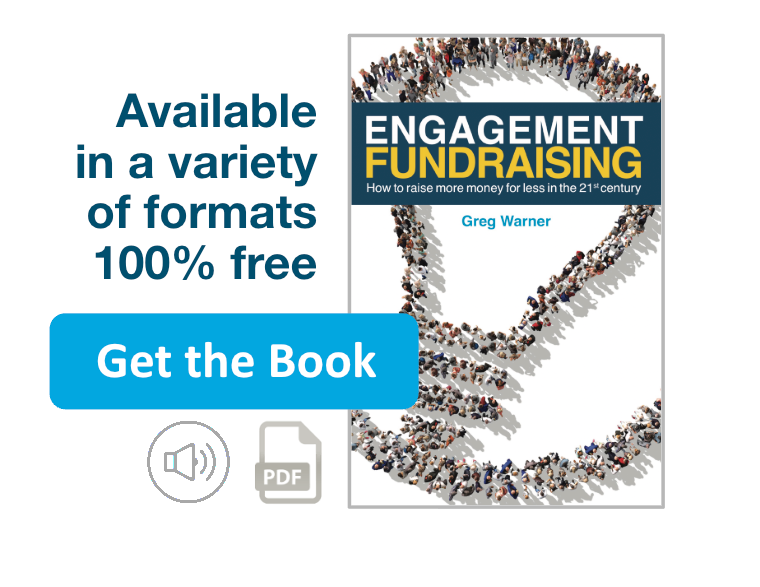

[…] One organization might consider a $2,000 donation a major gift, while another’s threshold would be $200,000. Every organization will have a different definition for a major gift. However, research shows that the median response to the question “What is considered to be a major gift by fundraisers?” was $5,000 – $9,999. […]